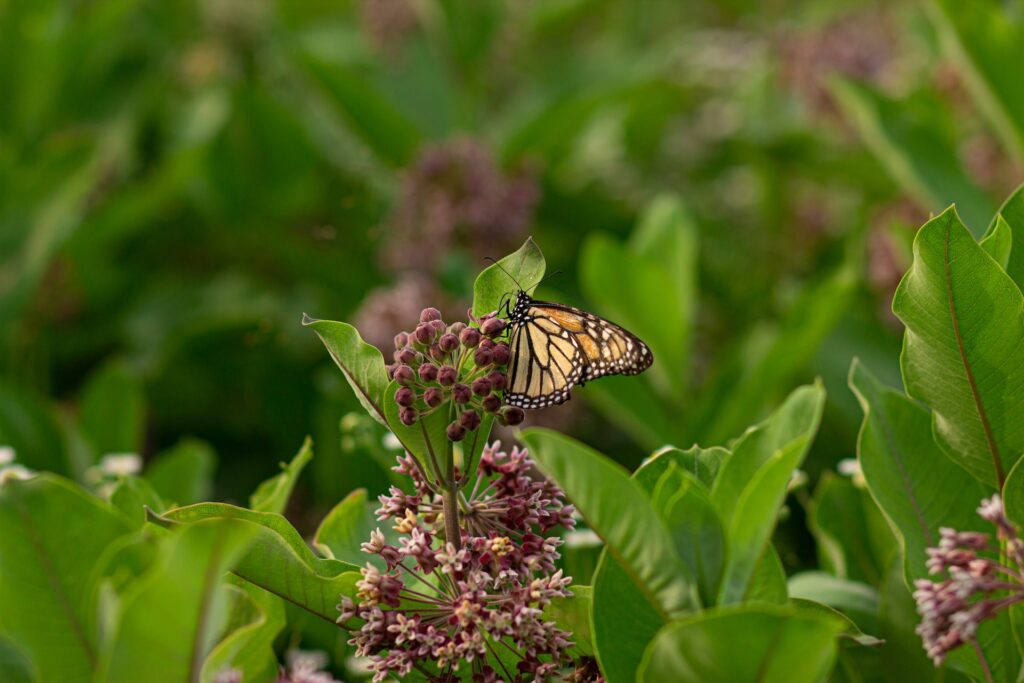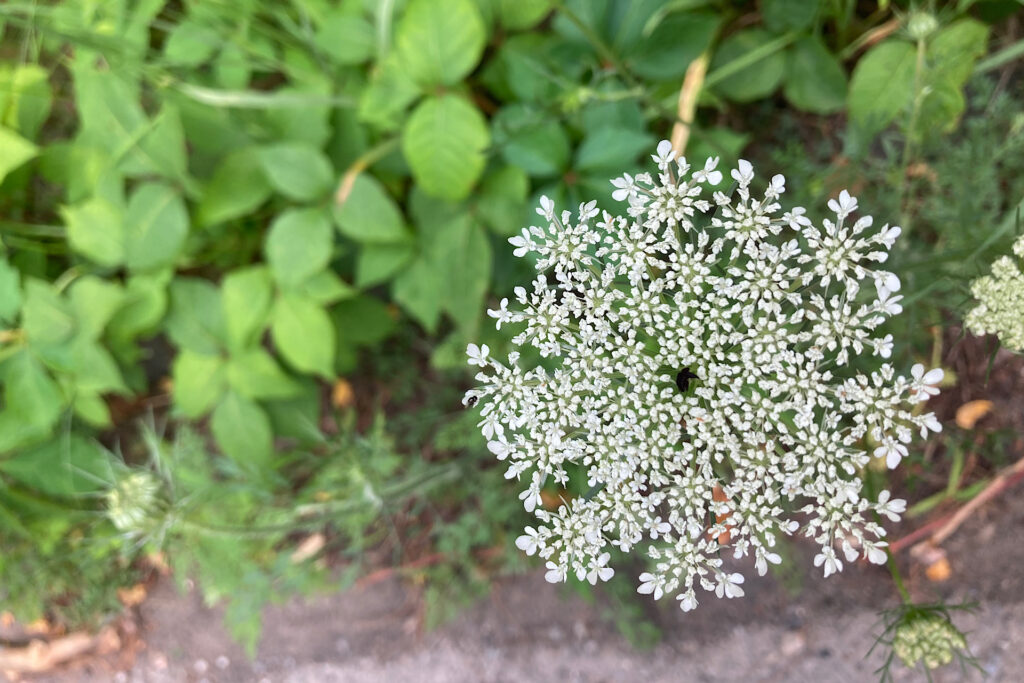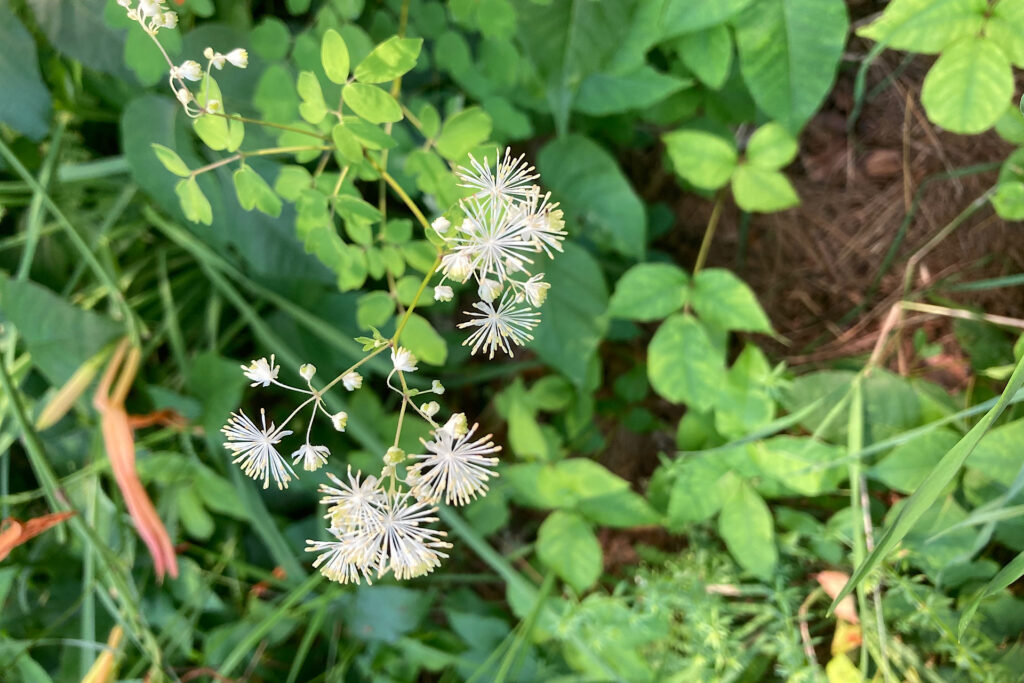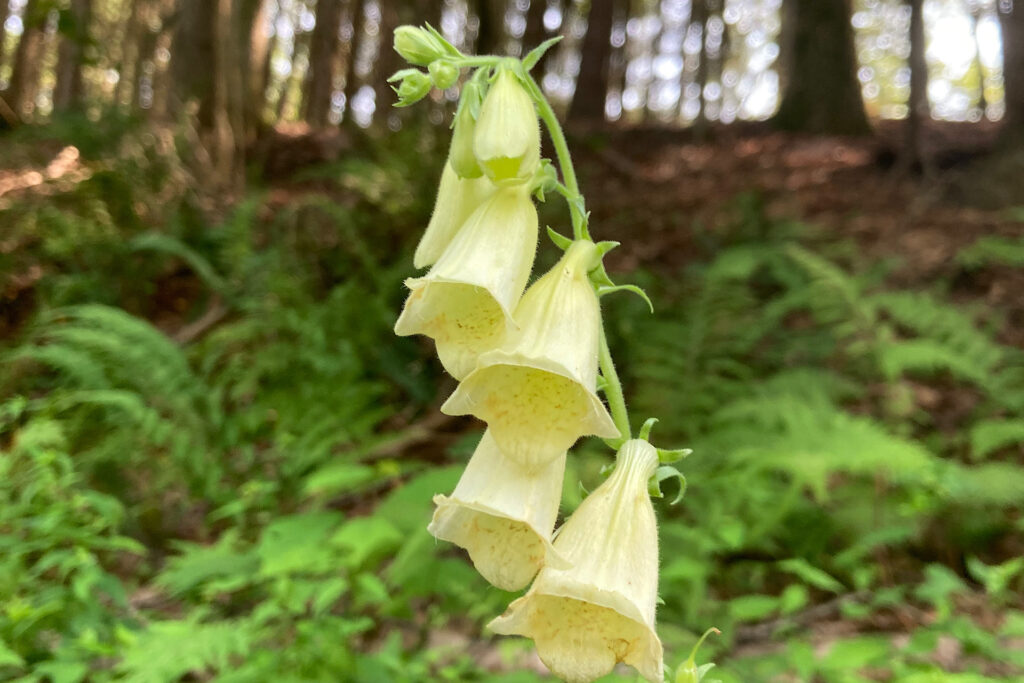The next time you take a walk or drive, I encourage you to note the native / naturalized roadside flowers edging the route you choose. We tend to overlook them in favor of cultivated garden beds, but you may be surprised at what is blooming wild around you.
I first took interest in the topic by discovering the YouTube channel: Canadian Permaculture Legacy. I don’t live in Canada, (I’m zone 5b), but a 20-minute video on this channel sparked my curiosity. This blogger took a walk on his lunch hour and pointed out a variety of edible berries growing wild on a trail adjacent to his office building. You just need to know what you’re looking for!
I do not have the confidence to attempt wild foraging yet, but I am currently widening my knowledge base with plant ID Apps and online databases specific to native plants in my area.
*Plant ID apps are not always 100% accurate. It is important to double-check your resources and never consume plants or berries unless you are certain on their ID. I also welcome comments/feedback if the plants in my article can be further defined.

Benefits of Native / Naturalized Roadside Flowers
The U.S. Forest Service advocates the use of native roadside flowers and plant material for a variety of reasons. Among them are:
- Stabilizing stream banks and floodplains.
- Providing food sources for animals, birds, native butterflies and insects. This can be in the form of pollen, nectar and seeds as well as the stems and leaves of certain plants.
- Limiting mowing/pesticide requirement and competition with other native plants.
- Enhancing aesthetic and visual quality while protecting biodiversity and land stewardship.
I frequently challenge myself to arrange backyard bouquets with blooms collected at home or gathered when I go out walking. These wild arrangements reflect the season and are a lovely, cost-effective addition to any room’s décor. It’s important, however, to choose carefully. Know what you are picking to avoid allergies or other reactions to plant material. You also should not deplete any areas of native / naturalized blooms when picking or transplanting. Additionally, it’s wise to avoid picking flowers from private property, unless the property owner has offered them up.
Below are some native / naturalized roadside flowers I photographed on a walk in mid-July. Again, these are zone 5b varieties.

Wild Carrot (Queen Anne’s Lace)
I’d categorize Wild Carrot as a naturalized roadside flower. The first settlers introduced this plant to the U.S. as a root vegetable and medicinal herb. It is now found in every state.
Botanical Name: Daucus carota
Description: Wild Carrot or Queen Anne’s Lace is an ancestor of the cultivated carrot we grow in our vegetable gardens. The leaves and stems emit a carrot scent when crushed. It is said to be edible when young, but its taproot rapidly becomes woody and fibrous with age. Flowers are creamy-white with a conspicuous, dark purple flower at the center. Queen Anne’s Lace grows approximately 3 feet tall. It is considered to be invasive and weedy, but has naturalized in most areas and is used often in floral arrangements. Various plants that resemble wild carrot are poisonous. These include: water hemlock, wild parsnip, poison hemlock, giant hogweed, and fool’s parsley.
Habitat: Fields, meadows, roadsides, disturbed habitats.

Fringed Loosestrife
Fringed Loosestrife is an herbaceous perennial wildflower belonging to the primrose family. Legend has it that in 1597, an English herbalist described tucking fresh yellow loosestrife into the yokes of oxen. Therefore, “appeasing the strife and unrulinesse which falleth out among oxen…” (aka “loosening strife”).
Botanical Name: Lysimachia ciliata
Description: Fringed Loosestrife is one of the most common varieties of Lysimachia. Its scientific name (ciliata) is derived from the hairs (cilia) that grow along its leaf stalks. Yellow Fringed Loosestrife blossoms produce a floral oil which attracts pollinators. The blooms are small, but provide support to bees, moths, and other native insects. Fringed loosestrife also attracts a specific bee (Melittidae macropsis) which only feeds on the Lysimachia species. In some areas, this plant population is in decline due to limited availability of wetland habitat.
Habitat: Wetlands, moist deciduous woods, roadsides, stream banks, flood plains.

Tall Meadow Rue
Tall Meadow Rue is a member of the buttercup family. It is also commonly referred to as King of the Meadow. This native roadside flower is a perennial plant that can grow from 3 to 10 feet tall. It is said that the Iroquois made an infusion of Tall Meadow Rue to treat nosebleeds and used it internally for gall conditions.
Botanical Name: Thalictrum pubescens
Description: Tall Meadow Rue flowers are cream-colored with thread-like stamens. The individual blooms are “star-like” in appearance. The flowers are then followed by round seed-like clusters. As the clusters mature, these ball-shaped seed heads turn brown. Tall Meadow Rue is constantly visited by bees and butterflies as well as moths and beetles.
Habitat: Disturbed habitats, river/lake shores, edges of wetlands, floodplains, forests, marshes, meadows and fields.

Yellow Foxglove
I wasn’t sure if this member of the plantain family was classified as a native species in my area. I was able to locate it on a flora checklist of native and naturalized plants in my state. I’m making the assumption that it falls into the naturalized category. It’s important to note that all parts of this plant are toxic and can prove fatal if ingested. You may note the word “Digitalis” in it’s botanical name and make an association with cardiac function. Although potentially less toxic than some members of the Digitalis species, Yellow Foxglove does contain potent cardiac glycosides. So although this plant was a jewel to find on my walk, it does garner respect; particularly around children and animals.
Botanical Name: Digitalis grandiflora
Description: Yellow Foxglove bears pale yellow or cream flowers. The blooms have a hanging tubular shape and are pollinated by bees. Each flower resembles the snipped off finger of a glove. The blossom’s interior contains brown spots or is sometimes spotless. Foxglove is often cultivated as a cottage garden bloom. The plant grows in clumps and will self-seed.
Habitat: Disturbed habitats, meadows and fields
Native / Naturalized Roadside Flower Observations
It’s fascinating to look closer at the ordinary wonders we pass by each day. Nature rebuilds the disturbed soil on our path with native / naturalized roadside flowers. Many of the plants on my daily route are pollinator powerhouses which also support birds and other wildlife. As an interesting side note, most of the roadside plants I’ve discovered during the past two weeks bear yellow and white flowerheads. Now, I’m beginning to see pink and purple varieties emerging. This will be another topic of curiosity to explore.
Your paths of travel will likely offer up a different variety of roadside blooms, depending on your location. Look for many of these native and naturalized plants in park settings as well. Many of my initial plant ID searches connected me with the Central Park Conservancy. They provide maps for locating native and naturalized plants within the park area.
Go explore! Let me know what native / naturalized roadside flowers you discover.
I look forward to hearing from you in the comments.
